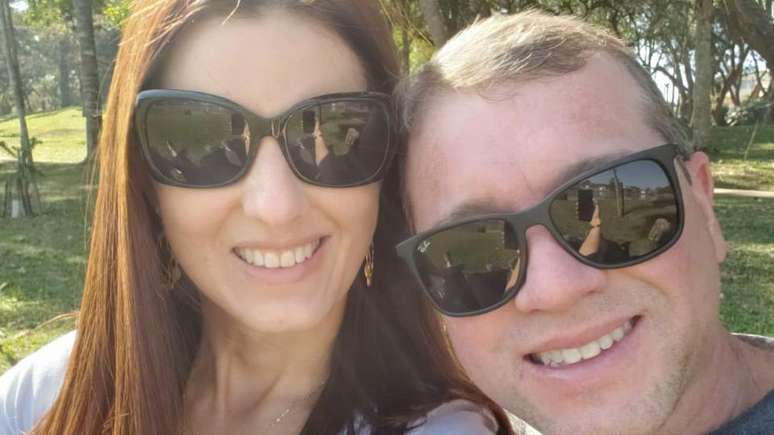Isabel Cardoso regained consciousness after a year and a half in a coma, a condition caused by lack of oxygen in the brain
html[data-range=”xlarge”] image figure img.img-17ee29ba9de34f602fe7c591d060a939jq12x276 { width: 774px; height: 435px; }HTML[data-range=”large”] figure image img.img-17ee29ba9de34f602fe7c591d060a939jq12x276 { width: 548px; height: 308px; }HTML[data-range=”small”] image figure img.img-17ee29ba9de34f602fe7c591d060a939jq12x276, html[data-range=”medium”] figure image img.img-17ee29ba9de34f602fe7c591d060a939jq12x276 { width: 564px; height: 317px; }
In November 2021, Isabel Cardoso underwent elective surgery, an aesthetic breast procedure after the removal of a tumor, which later turned out to be benign, but took away a small part of her breast, which he annoyed.
After the surgery, Isabel suffered from a lack of oxygen, something her husband, Luciano Bueno, says he’s not sure how it happened.
Lack of oxygen in the brain, also known as brain hypoxia, can cause severe and irreversible damage to cells within minutes, as the brain is a highly sensitive organ and depends on a constant supply of oxygen and nutrients to function.
Loss of oxygen flow can cause neurological problems such as loss of memory and motor coordination, difficulty concentrating, seizures and coma – exactly what happened to Isabel.
“Over the next few days, she had several seizures and had to be put into a medically induced coma so the drugs could control the seizures. But when those drugs were stopped, which is the time to see how the patient reacts, nothing happened.” She was fully asleep, sometimes she would open her eyes, but it was what doctors call a non-contact eye opening — we didn’t even know if she could see,” says her husband.
At the time, Isabel was 45 and Luciano was 43. They had been married for almost 15 years and were waiting in adoption lines for the opportunity to have a son or daughter.
“We had a planned life, we dreamed of doing so many things together. The first moment was a shock, but my expectation was that she would wake up from the induced coma and that we would go home together, gradually getting back to life. When he didn’t come back, it was that I really thought: ‘My God, what now?'”

Luciano says doctors gradually explained Isabel’s poor prognosis: The more time that passed, the less chance she had of returning to her normal self.
The chances of recovery for a person who has been in a coma for more than a year are relatively low. According to a study published in the scientific journal Neurology in 2019, the recovery rate after a year of coma was about 4%.
Neurologist Amauri Araújo Godinho, who has not followed Isabel’s case, explains that the low expectation is due precisely to the severity of the brain injuries caused by the lack of oxygen in the brain.
“There are very sensitive brain areas, especially autonomic functions, when damaged, permanent sequelae. A condition where the patient opens his eyes in a non-contact way, is a state of vegetative state. We normally do not see improvement in these patients. I would not say never a family to create an expectation that that patient,” underlines the doctor, who works at the Santa Lúcia hospital, in Brasilia.
In children, according to the neurologist, although it is not yet guaranteed, recovery is slightly more common due to neuroplasticity, the ability of a child’s brain to change structure and function in response to stimuli and experiences during the process of brain development.
“In these cases, other areas of the brain can take over the function of those that have been damaged.”
The team also informed Luciano that he would have to bring his wife home, adapting the house to “home care”, with the assistance Isabel needed.
“It was more of a blow, because I thought she was going to stay there in the hospital until she got better. At first I couldn’t understand the benefits it could have at home, but after much research, I realized that the hospital is inhospitable to someone in Isa’s position, in frail health.”
Working in his own company, in which he shares the partnership with his brother, Luciano was able to take some free time to take care of his wife.
Even if Isabel has been well cared for, a bedridden patient, in general, has more fragile health. This required recurring hospitalizations.
“The flu, for us, is not the same thing for a patient in her condition. Isa was hospitalized to treat respiratory pathologies, thrombosis… It always took 15 or 20 days to solve each specific problem”, recalls Luciano.
“I was told the condition was irreversible”
The team also informed Luciano that he would have to bring his wife home, adapting the house to “home care”, with the assistance Isabel needed.
“It was more of a blow, because I thought she was going to stay there in the hospital until she got better. At first I couldn’t understand the benefits it could have at home, but after much research, I realized that the hospital is inhospitable to someone in Isa’s position, in frail health.”
Working in his own company, in which he shares the partnership with his brother, Luciano was able to take some free time to take care of his wife.
Even if Isabel has been well cared for, a bedridden patient, in general, has more fragile health. This required recurring hospitalizations.
“The flu, for us, is not the same thing for a patient in her condition. Isa was hospitalized to treat respiratory pathologies, thrombosis… It always took 15 or 20 days to solve each specific problem”, recalls Luciano.
“The doctor told me the condition was permanent, that it’s irreversible, right? He said the chances of Isa actually waking up were 2%. I’ve embraced that number and always joked that ‘while there’s the bamboo, there is an arrow’.”
Luciano says he’s started “actively looking for that 2%.”
“I did extensive research on patients who had awakened from comatose states. I looked at the scientific literature, but no case was like my wife’s.”
The ‘UTI 4 miracle’
In March of this year, Isabel had to be hospitalized for tracheobronchitis treatment. While in the hospital, she started having seizures and had to be taken back to intensive care.
Back in the recovery room, one of the nurses, who used to make frequent visits to Isabel’s room, wished her the usual “good morning”.
“When we saw her, Isa was moving her mouth. She has a tracheotomy [a presença de um tubo na região da garganta], for the sound to come out you have to plug that small hole. We did and she was able to respond, even with great difficulty, say her name and nod that she knew she was in the hospital. It was too exciting. I remembered at the time that the doctor only gave us a 2% chance, but my wife woke up,” says her husband.
Others from the team of doctors and nurses who had been involved in Isabel’s treatment over the past year and a half were called into the room.
Gustavo Tarre, coordinator of intensive care at the Marcelino Champagnat hospital in Curitiba, where Isabel stayed, says that the patient’s “awakening” came as a surprise to everyone.
“I’ve never seen a case like hers. Some patients show progressive improvements after an induced coma, but hers was truly amazing, because one day she was one way and the next day she woke up completely different.”
The doctor explains that it is unknown what caused Isabel to interact again. According to him, she was not given any medication or therapy other than what she had already used in other hospitalizations.
In the hospital, the case, rare even in the medical literature, was referred to as the “miracle of intensive care 4”, referring to the number of care units in which Isabel remained most of the time.
Elizabeth’s healing
The improbable evolution has rekindled Luciano’s hope in the recovery of his wife, even if the path is difficult.
Her husband says she has small gestures that indicate at least some of her memory remains intact, despite the neurological damage. He remembers his name, gets excited when he sees his family, but seems to have no memories of the couple’s dog, adopted shortly before the episode that led her to a coma.
“Despite the surprising earnings, it still cannot be said that he has recovered because he still has many sequels. Because he still has many sequels. He said there is still a lot to do,” says Tarre.
The treatment, carried out at home, consists of speech therapy and physiotherapy sessions, as well as follow-up with a psychiatrist.
As Isabel continues to seek recovery, Luciano says he’s keeping her as comfortable as possible, even with herself. “I schedule sessions with a podiatrist, which is something she’s always needed, as well as professionals to fix her hair, moisturize her skin… I think maintaining her self-esteem is important to her.”
“It’s one step at a time, one day at a time. But now I know that she is there, that she listens to me and, even with limits, she manages to interact. It’s something that fills me with hope,” she adds.
Source: Terra
Ben Stock is a lifestyle journalist and author at Gossipify. He writes about topics such as health, wellness, travel, food and home decor. He provides practical advice and inspiration to improve well-being, keeps readers up to date with latest lifestyle news and trends, known for his engaging writing style, in-depth analysis and unique perspectives.





![Un Si Grand Soleil preview: Thursday, October 23, 2025 episode recap [SPOILERS] Un Si Grand Soleil preview: Thursday, October 23, 2025 episode recap [SPOILERS]](https://fr.web.img6.acsta.net/img/12/a9/12a96513d7a4f6120d33b7120427505f.jpg)


